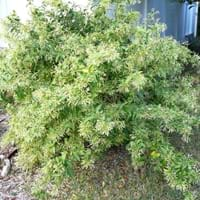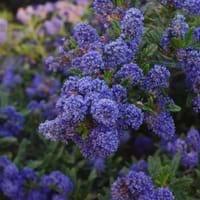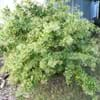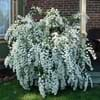Life Span
Perennial
Perennial
Origin
Mexico, Latin America and the Caribbean
Hybrid origin, Northwestern United States, California, Canada
Types
Not Available
New Jersey tea,Maritime ceanothus,Ceanothus connivens
Habitat
Warm and moist climatic conditions
Rocky Mountains, Scrubs
USDA Hardiness Zone
9-12
5-8
Sunset Zone
13, 16, 17, 18, 19, 20, 21, 22, 23, 24
4, 5, 6, 7, 8, 9, 14, 15, 16, 17, 18, 19, 20, 21, 22, 23, 24
Habit
Oval or Rounded
Oval or Rounded
Flower Color
White, Light Green
White
Flower Color Modifier
Not Available
Not Available
Fruit Color
Not Available
Not Available
Leaf Color in Spring
Green
Lemon yellow
Leaf Color in Summer
Green
Green
Leaf Color in Fall
Green
Red, Bronze
Leaf Color in Winter
Green
Not Available
Leaf Shape
Ovate
Club - shaped
Plant Season
Spring, Summer, Fall, Winter
Spring, Summer, Fall
Sunlight
Full Sun, Partial Sun
Partial Sun, Partial shade
Type of Soil
Loam, Sand
Clay, Loam, Sand
The pH of Soil
Neutral, Alkaline
Acidic, Neutral
Soil Drainage
Well drained
Average
Bloom Time
Spring, Late Spring, Early Summer, Summer, Late Summer, Early Fall, Fall
Early Spring
Tolerances
Drought
Not Available
Where to Plant?
Ground, Pot
Ground, Pot
How to Plant?
Stem Cutting, Transplanting
Rooted stem cutting, Seedlings
Plant Maintenance
Medium
Medium
Watering Requirements
Requires regular watering
Do Not over Water
In Summer
Lots of watering
Lots of watering
In Spring
Moderate
Moderate
In Winter
Average Water
Average Water
Soil pH
Neutral, Alkaline
Acidic, Neutral
Soil Type
Loam, Sand
Clay, Loam, Sand
Soil Drainage Capacity
Well drained
Average
Sun Exposure
Full Sun, Partial Sun
Partial Sun, Partial shade
Pruning
Prune in the growing season, Prune to half of its height, Remove dead branches
Remove damaged leaves, Remove dead branches, Remove dead leaves
Fertilizers
fertilize every 2-3 weeks while growing, light feeding and water solubles
All-Purpose Liquid Fertilizer
Pests and Diseases
Aphids, Black spots, Caterpillars, Foliar disease, Sap-Sucking Insects, White spots
Not Available, Red blotch
Plant Tolerance
Drought
Drought
Flower Petal Number
Single
Single
Foliage Texture
Medium
Medium
Foliage Sheen
Glossy
Matte
Attracts
Hummingbirds
Birds
Allergy
Asthma, Respiratory problems
Not Available
Aesthetic Uses
Cottage Garden, Showy Purposes
Formal Garden
Beauty Benefits
Not Available
Not Available
Environmental Uses
Air purification
Air purification
Medicinal Uses
Analgesic, Antidepressant, Antiseptic, Antispasmodic, Aphrodisiac, Conjuctivitis, Fever, Immunity, Urine infections, Used as a sedative
Not Available
Part of Plant Used
Flowers
Leaves
Other Uses
Oil is used in perfume, soaps, creams, etc.
Basketary
Used As Indoor Plant
No
No
Used As Outdoor Plant
Yes
Yes
Garden Design
Container, Feature Plant, Foundation, Hedges, Mixed Border, Screening, Wind Break, Topiary, Bonsai, Espalier, Tropical
Feature Plant, Foundation, Hedges, Mixed Border
Botanical Name
CESTRUM nocturnum
CEANOTHUS 'Concha'
Common Name
night-blooming jasmine, night-blooming cestrum, lady of the night, queen of the night, night-blooming jessamine
Wild lilac
In Hindi
रातरानी
Wild Lilac
In German
Nachtjasmin
Säckelblumen
In French
jasmin de nuit
Wild Lilac
In Spanish
dama de noche
Ceanothus
In Greek
νύχτα γιασεμιά
Wild Lilac
In Portuguese
jasmim-da-noite
Ceanothus
In Polish
noc kwitnący jaśmin
Wild Lilac
In Latin
nox Aenean virent
Wild Lilac
Phylum
Magnoliophyta
Tracheophyta
Class
Magnoliopsida
Magnoliopsida
Family
Solanaceae
Rhamnaceae
Clade
Angiosperms, Asterids, Eudicots
Angiosperms, Eudicots, Rosids
Tribe
Not Available
Not Available
Subfamily
Not Available
Not Available
Number of Species
Not Available
Season and Care of Night Blooming Jasmine and Wild Lilac
Season and care of Night Blooming Jasmine and Wild Lilac is important to know. While considering everything about Night Blooming Jasmine and Wild Lilac Care, growing season is an essential factor. Night Blooming Jasmine season is Spring, Summer, Fall and Winter and Wild Lilac season is Spring, Summer, Fall and Winter. The type of soil for Night Blooming Jasmine is Loam, Sand and for Wild Lilac is Clay, Loam, Sand while the PH of soil for Night Blooming Jasmine is Neutral, Alkaline and for Wild Lilac is Acidic, Neutral.
Night Blooming Jasmine and Wild Lilac Physical Information
Night Blooming Jasmine and Wild Lilac physical information is very important for comparison. Night Blooming Jasmine height is 120.00 cm and width 180.00 cm whereas Wild Lilac height is 120.00 cm and width 120.00 cm. The color specification of Night Blooming Jasmine and Wild Lilac are as follows:
Night Blooming Jasmine flower color: White and Light Green
Night Blooming Jasmine leaf color: Green
Wild Lilac flower color: White
- Wild Lilac leaf color: Lemon yellow
Care of Night Blooming Jasmine and Wild Lilac
Care of Night Blooming Jasmine and Wild Lilac include pruning, fertilizers, watering etc. Night Blooming Jasmine pruning is done Prune in the growing season, Prune to half of its height and Remove dead branches and Wild Lilac pruning is done Remove damaged leaves, Remove dead branches and Remove dead leaves. In summer Night Blooming Jasmine needs Lots of watering and in winter, it needs Average Water. Whereas, in summer Wild Lilac needs Lots of watering and in winter, it needs Average Water.





